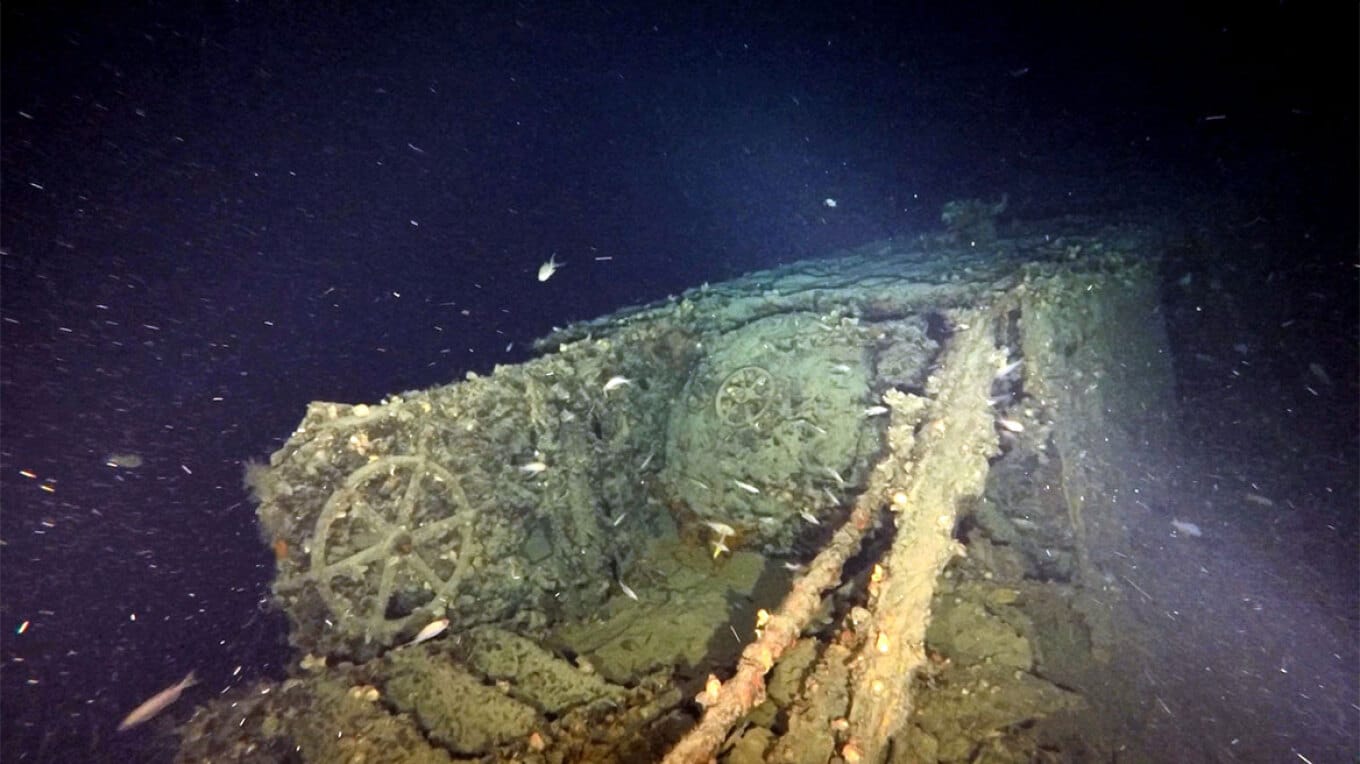British Submarine That Disappeared in 1943 Found in Greek Sea
Source: GreekReporter.com


A British submarine on a secret mission during World War II that disappeared in October 1943 has been found in the Greek seas.
The HMS Trooper that was patrolling in the Aegean Sea on a secret mission was found 81 years later. It was discovered in the Icarian Sea at a depth of 253 meters (830 feet).
The missing British submarine was found in the Greek sea by Planet Blue, a company that undertakes deep underwater operations and research. This is the eighth missing submarine that the company has discovered.
Costas Thoktaridis, owner of Planet Blue, spoke to the Athens-Macedonian News Agency (AMNA) and explained that the 84-meter-long HMS Trooper is cut into three distinct sections, namely the bow, middle section, and stern. This confirms a very violent sinking following a mine explosion.
Locating the wreck not only solves a decades-old mystery but also helps bring closure for the victims’ families.
“It is with great emotion that I learn that the distinguished Greek researcher Costas Thoktaridis and his team have solved an 81-year-old mystery and discovered the location of the wreck of the British submarine HMS Trooper,” said George Malcolmson, former Director of Archives of the Royal Navy Submarine Museum.
“Knowing the location of the final resting place of our submarine men will help provide an epilogue for surviving relatives and descendants and serves as a timely reminder of this special class of men who made the ultimate sacrifice. Resurgam (I shall rise again),” Malcolmson added.
Throughout the search, there was no intervention or disturbance of any kind to the British submarine wreck, as it serves as the liquid grave of the 64 men of the crew. Among them was Australian volunteer officer Lt. John Stuart Ryder, 22.
Turmoil in the Aegean
The capitulation of Italy on September 8, 1843, brought chaos in the Aegean. The Germans were determined to take control of the Dodecanese from the Italians while they were unwilling to allow the presence of Allied troops on the Aegean islands.
By the end of September, the British were informed of the concentration of German ships in the ports of Piraeus and Crete and the loading of troops and supplies, with the apparent destination being the Dodecanese. At the same time, the German minesweeper Drache was laying mines in the Icarian Sea.
HMS Trooper under Lt. John S. Wraith, sailed from Beirut on its eighth offensive patrol on September 26th and was ordered to the Aegean. In addition to aggressive patrolling in the Aegean, the British submarine captain was tasked with transporting three agents as well as valuable cargo to be delivered at Kalamos in Evia.
On the evening of September 30, 1943, HMS Trooper reached the pre-arranged area and gradually landed on the shore. Greek Intelligence Service Major Georgios Diamantopoulos had been seconded to the British SOE on a special mission.
The Greek agent would act alone in carrying out Operation Eruption. In addition, Lt. Emmanuil Veis and a radio operator with the code name “Thomas” disembarked from the British submarine, carrying 400 kg of supplies.
The disembarkation was successfully completed on October 1, 1943. They were the last people to exit the submarine alive.
On October 5, 1943, the British had attained information on a new German landing operation with the island of Leros as its possible destination. The HMS Trooper was ordered to patrol between Donousa and Ikaria. From then on, traces of the British submarine disappeared. It did not return to the port of Beirut on October 17th as ordered and never did afterwards. It was considered missing in action.
The archive search of the British submarine found in the Greek Aegean Sea
The historic search for the HMS Trooper began in 1998 from England, and the first underwater search took place in 2000. Since then, there have been 14 more failed missions in the Dodecanese. The research had focused on the minefields of Leros and then Kalymnos and Kos. Ten sea minefields were searched without finding the British submarine.
Then the team proceeded to investigate all the German minefields laid by the Germans in the Aegean, and it was found that the minesweeper Drache laid five anti-submarine minefields of 287 mines north of Donoussa island. It was the same day that the HMS Trooper departed from Beirut for the last mission and was also the area the submarine’s commander was ordered to patrol between October 6th to 9th in 1943 prior to the ordered move to Leros.
The theory had to be proven in practice with field research. The fifteenth and last expedition took off in 2023. This time, it was not in the Dodecanese but in the heart of the Aegean in the Icarian Sea. Thoktaridis says it is one of the most difficult seas with strong winds, huge waves, and strong underwater currents. The continuous and persistent research, however, bore fruit.
The wreck of HMS Trooper was located in international territorial waters north of Donoussa at a depth of 253 meters on one of the five German minefields laid by Drache on September 26, 1943.
The initial localization of the exact location of the wreck was achieved with a CHIRP dual-emission sonar. In the final phase, the identification was made using an unmanned underwater remote-controlled ROV Super Achille type.
The original article: belongs to GreekReporter.com .
